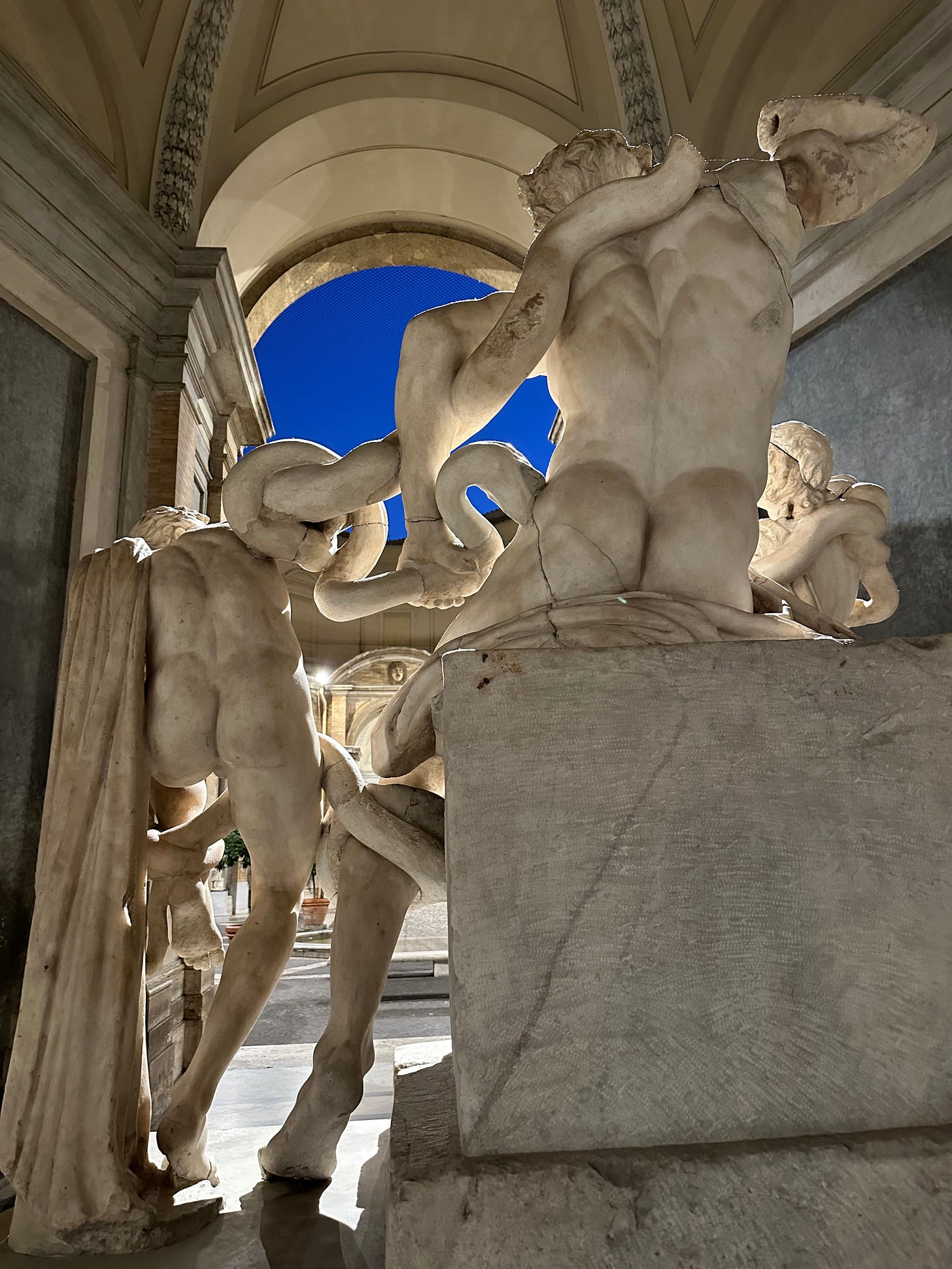On the fourteenth of January of 1506 a remarkable statue was discovered in a vineyard on the Esquiline Hill belonging to a man called Felice de’ Fredis. The exact location has fallen victim to the vicissitudes of the last five centuries, but it was described several decades later by Francesco da Sangallo as being close to Santa Maria Maggiore. Pope Julius II heard of the discovery and swiftly despatched his court artists to investigate. Michelangelo and Giuliano da Sangallo were present, as was Giuliano’s son Francesco who was then eleven years old.
According to Francesco’s description, written in a letter of 1567, the fragments discovered were immediately identified by his father as belonging to the celebrated sculptural group of Laocöon and his sons described by Pliny the Elder. Book XXXVI of his Natural History concerns itself with Stone, and Pliny dedicates Chapter 4 of that book to sculpture.
“[…] the Laocoön, for example, in the palace of the Emperor Titus, [is] a work that may be looked upon as preferable to any other production of the art of painting or of statuary. It is sculptured from a single block, both the main figure as well as the children, and the serpents with their marvellous folds. This group was made in concert by three most eminent, Polydorus, and Athenodorus, natives of Rhodes. …”
Pliny, Natural History XXXVI, 4
Keep reading with a 7-day free trial
Subscribe to Understanding Rome's Newsletter to keep reading this post and get 7 days of free access to the full post archives.




